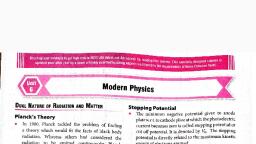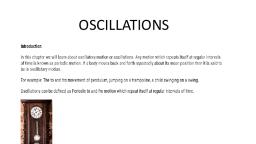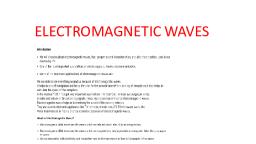Question 2 :
A body undergoing S.H.M. has a maximum velocity of $1 ms^{-1} $ and a maximum acceleration of $4m$ <br> $ s^{-2} $.Its amplitude in metres is :                                                                                                               <br/>
Question 3 :
Assertion: An elastic spring of force constant $k$ is stretched by a small length $x$. The work done in extending the spring by a further length $x$ is $2k{x}^{2}$
Reason: The work done in extending an elastic spring by a length $x$ is proportional to ${x}^{2}$
Question 4 :
Velocity at mean position of a particle executing SHM is v, then velocity of the particle at a distance equal to half of the amplitude is
Question 6 :
At which position in its oscillatory motion, does the bob come to rest ?
Question 7 :
A spring of force constant $k$ is cut into two equal halves. The force constant of each half is
Question 8 :
Assertion : If the amplitude of a simple harmonic oscillator is doubled, its total energy becomes double.<br>Reason : The total energy is directly proportional to the amplitude of vibration of the harmonic oscillator.
Question 10 :
The bob of mass $50 gms$ of a simple pendulum is replaced by another bob of mass $75 gms$. The time period of the simple pendulum
Question 12 :
Which of the following statements is /are true for a simple harmonic oscillator?
Question 13 :
In forced oscillation of a particle the amplitude is maximum for a frequency $\omega_1$ of force, while the energy is maximum for a frequency $\omega_2$ of the force, then:
Question 14 :
The potential energy of a particle executing S.H.M. is $2.5J$, when its displacement is half of amplitude. The total energy of the particle be:-
Question 15 :
The time taken by the bob of a pendulum to complete one oscillation is called its _______<br>
Question 16 :
The amplitude of oscillation of a particle is 0.05 m.If its period is 1.57s. Then the velocity at the mean position is
Question 17 :
State whether true or false.<br/>All periodic motion need not be oscillatory but all oscillatory motions<br/>are periodic.
Question 18 :
A block of mass m rests on a platform. The platform is given up and down SHM with an amplitude d- What can be the maximum frequency so that the block never leaves the platform?
Question 21 :
A toy train rotates about a circle of radius 50 cms , 10 times in 2 minutes. What is the frequency of the train
Question 22 :
For a simple pendulum, graph between $L$ and $T$ will be a :
Question 24 :
In case of a simple pendulum the cause of damping is:
Question 25 :
What is the effect on the time period of a simple pendulum if the mass of the bob is doubled?
Question 26 :
The energy of a simple harmonic oscillator in the state of rest is $3$ $Joules$. If its mean K.E. is $4$ $Joules$. Its total energy will be:
Question 27 :
Non harmonic motion is a motion of a particle in which
Question 28 :
In $SHM$ restoring force is $F=-kx$, where $k$ is force constant, $x$ is displacement and $a$ is amplitude of motion, then total energy depends upon
Question 30 :
A simple harmonic oscillator oscillates, with an amplitude A. At what point of its motion , is the power delivered to it by the restoring force maximum -<br>
Question 31 :
In a SHM, when the displacement is one half the amplitude, what fraction of the total energy is kinetic?
Question 32 :
A particle is in SHM. Then the graph of its acceleration as a function of displacement is a
Question 33 :
A particle oscillates with undamped simple harmonic motion. Which one of the following statements about the acceleration of the oscillating particle is true?
Question 34 :
Which of the following statements is/are correct<br>(i) The distance between two consecutive compressions is called frequency of sound wave<br>(ii) Sound propagates as pressure variations<br>(iii) Compressions are narrower in a high pitched sound
Question 35 :
A point mass 0.1 kg in SHM of amplitude 0.1 m. When the particle passes through the mean position, its kinetic energy is 8x10$^{-3}$J. The equation of motion of this particle if the initial phase of oscillation is $45^{\circ}$ is:<br/>
Question 36 :
A particle of mass 10 gm is placed in a potential field given by $V = (50x^2 + 100) \ J/kg$. The frequency of oscillation in cycles/sec is :
Question 37 :
 A particle moves along the $x$-axis according to the equation $x = 10 sin3 ( t )$. The amplitudes and frequencies of component SHMs are<br/>
Question 39 :
A block rides on a piston that is moving vertically with simple harmonic motion. The maximum speed of the piston is $2m/s$. At what amplitude of motion will the block and piston separate? $(g=10m/s^{2})$<br/>
Question 40 :
The ratio of kinetic energy to the potential energy of a particle executing SHM at a distance equal to half its amplitude, the distance being measured from its equilibrium position is


















































